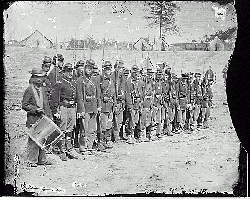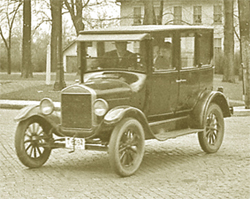Seven Ways to Compute the Relative Value of a U.S. Dollar Amount - 1790 to Present
Determining the relative value of an amount of money in one year (the initial year) compared to another (the desired year) is more complicated than it seems at first. There is no single "correct" measure, and economic historians use one or more different index depending on the context of the question.
An index such as the Consumer Price Index is measured as the price of a "bundle" of goods and services that a representative group buys or earns. Over time the bundle changes; for example, carriages are replaced with automobiles, and new goods and services are invented such as cellular phones and heart transplants.
These considerations do not stop the fascination with these comparisons or even the necessity for them. For example, such comparisons may be critical to determine appropriate levels of compensation in a legal case that has been deferred.
The context of the question, however, may lead to a preferable measure other than the real price (real wage, or real cost) as measured by the Consumer Price Index (CPI), which is used far too often without thought to its consequences.
Therefore, when talking about the (relative) worth of an item, it should be categorized as a commodity, a project, or an observation of compensation or wealth. Then (and only then) should it be measured relative to well-defined indexes of economic activity that put the item in perspective. This process will generate specific definitions of relative worth that depend on the index used and the type of item it is.
The Seven Indexes Used
This number is not published until September each year, so the value use here is estimated until then.
Definitions of Relative Worth
The definitions of relative worth presented here are computed using the ratio of the change in the indexes listed above. Your initial amount is multiplied by the observed value of each index from the desired year divided by the observed value from the initial year. The best measure of the relative worth over time depends on the type of thing you wish to compare. (click on each to get its definition.)
If you are looking at a Commodity, then the best measures are:
Real Price is measured as the relative cost of a (fixed over time) bundle of goods and services such as food, shelter, clothing, etc., that an average household would buy. In theory the size of this bundle does not change over time, but in practice adjustments are made to its composition. This measure uses the CPI.
Relative Value in Consumption is measured as the relative cost of the amount of goods and services such as food, shelter, clothing, etc., that an average household would buy. Historically this bundle has become larger as households have bought more over time. This measure uses the Value of the Consumer Bundle, which is only available after 1900.
Labor Value is measured as the multiple of the average wage that a worker would need to use to buy the commodity. This measure uses one of the wage indexes.
Income Value is measured as the multiple of average income that would be needed to buy a commodity. This measure uses the index of GDP per capita.
Economic Share is the worth of a commodity in a particular time period divided by GDP; it is its share of total output. This is helpful in measuring the relative value of aggregate consumption items such as all the cars made in a year.
If you are looking at an Income or Wealth, then the best measures are:
Real Wage or Real Wealth measures the purchasing power of an income or wealth by its relative ability to buy a (fixed over time) bundle of goods and services such as food, shelter, clothing, etc. This bundle does (in theory) not change over time. This measure uses the CPI.
Household Purchasing Power is measured as the relative cost of a bundle of goods and services such as food, shelter, clothing, etc., that an average household would buy. This bundle has become larger as households have bought more over time. This measure uses the Value of the Consumer Bundle, which is only available after 1900.
Relative Labor Earnings measures an amount of income or wealth relative to the wage of the average worker. This measure uses one of the wage indexes.
Relative Income measures an amount of income or wealth relative to per capita GDP. When compared to other incomes or wealth, it shows the economic status or relative "prestige value" the owners of this income or wealth because of their rank in the income distribution. This measure uses GDP per capita.
Relative Output The ratio of income, compensation or wealth to GDP provides a sense of the share of the economy it represents, the amount of what we call the relative output it commands. Many believe that the rich have access to political favors that are denied to the average person. In that sense, their income and wealth relative to the output of the economy is a measure of their economic power.
If you are looking at a Project, then the best measures are:
Real Cost of a project is measured by comparing its cost to the cost index of all output in the economy. This measure uses the GDP Deflator.
Household Cost is the cost of a project relative to the amount the average household spends annually on consumer goods and services. The project may pertain either to business/government, a person/household, or to a nonprofit institution. This measure uses the Value of the Consumer Bundle, which is only available after 1900.
Labor Cost of a project is measured as a multiple of the average wage of the workers that might be used to build the project. This measure uses one of the wage indexes.
Relative Cost of a project is measured as a multiple of the resources used in its production. This would include the labor, capital and materials used to produce the project. This measure uses GDP per capita.
Economy Cost of a project is measured as the cost of the project as a percent of the output of the economy. This measure indicates the opportunity cost in terms of the total output of the economy. It can be interpreted as the importance of the item to society as a whole. This measure uses the share of GDP.
Here Are Some Examples

George Washington was paid a salary of $25,000 a year from 1789 to 1797 as the first president of the United States. The current salary of the president is now $400,000, to go with a $50,000 expense account, a generous pension and several other benefits. Has the remuneration improved?
Making a comparison using the CPI for 1790 shows that $25,000 corresponds to about $885,000 today, so current presidents do not have an equal command over consumer goods as the Father of the Country. (Of course, Washington had to travel by horse drawn carriage, not helicopters or Air Force One.)
When comparing Washington's salary to an unskilled worker, or the measure of average income, GDP per capita, then the comparable numbers are $41.4 to $43.7 million. Granted that would not put him in the ranks of the top 25 executives today that make over $200 million. It would, however, be many times more than any elected official in this country is paid today. Finally, to show the "economic power" of his wage, we see that his salary as a share of GDP would rank him equivalent to $3.78 billion.

The Erie Canal was built between 1817 and 1825 for a price of $7 million. This waterway is regarded as one of the most important investments in the nineteenth century as it opened the Midwest to trade and migration. How does its cost compare to what its cost would be today?
Using the GDP deflator for 1825 shows that it would be $233 million, not more than the cost today
of a few miles of Interstate highway. Using the unskilled wage measure the cost is $5.3 billion.
From a historical point of view, this may be the best measure as most of the cost of building the
canal was probably unskilled labor.
Using the GDP per capita, the cost is close to $8.1 billion, and as a share of GDP, it comes in close
to $245 billion. As a comparison the current budget of the U.S. Department of transportation is
$232 billion.
Because of the volatility of prices in that period, if we had chosen 1817 instead of 1825, the GDP deflator computation would have been $181 million or about 22% less and the other measures are different by similar magnitudes as well. This is a good example of how "approximate" these comparisons are.

Slavery in the United States was an institution that had a large impact on the economic, political and social fabric of the country. The average price of a slave in 1860 was $800 and the economic magnitude of that price in today's values ranges from $22,700 to 5.3 million, depending on the index used.
In that year, there were an estimated four million slaves living in the South and it is estimated that their aggregate market value was over $3 billion then. That corresponds to over $19.9 trillion today (as a share of GDP).
For a discussion of these issues, see Measuring Slavery in 2020 Dollars.

- The Civil War was one of the most devastating events in the history of the United States. It lasted
from 1861 to 1865 and has been estimated to have a direct cost of about $6.7 billion valued in 1860
dollars. If this number were evaluated in dollars of today using the GDP deflator it would be $190
billion, less than one-fourth of the current Department of Defense budget. This would be
inappropriate, as would be using the wage or income indexes. The only measure that makes sense for
an expenditure of this size is to use the share of GDP, as the war impacted the output of the entire
country. Thus the relative value of $6.7 billion of 1860 would be $44.3 trillion today, or over 150% of
our current GDP.
The $6.7 billion does not take into account that the war disrupted the economy and had an impact of lower production into the future. Some economic historians have estimated this additional, or indirect cost, to be another $7.3 billion measured in 1860 dollars. This means the cost of the war (as a share of the output of the economy) was nearly $48.3 trillion as measured in current dollars.

The Model T Ford cost $850 in 1908; however, by 1925 the price had fallen to $290. How do we compare these values? If you wanted to compare the two years you would see that by using the CPI, the GDP deflator or the consumer bundle, $850 in 1908 is equivalent to a value between $1,470 and $1,670 in 1925. Using the wage index we see that the labor cost (of the 1908 car in 1925 wages) was $2,090 and by using the GDP per capita index it was $1,930. Thus in 1925 the $290 was less than 20% of its cost in 1908 using the price indexes and only 11 to 14% using the wage indexes and 15% using the GDP per capita.
If we wanted to consider the costs of the Model T using today's prices we would find that the $850 cost in 1908 is $29,900 in today's prices using the CPI, $20,800 using the GDP deflator, $190,000 using the unskilled wage, and $172,000 when comparing using the GDP per capita. At this point the Ford was a luxury for most everyone.
The $290 in 1925, on the other hand, would be only $5,190 in today's prices using the CPI, $4,110 using the GDP deflator, $21,000 using the unskilled wage, and $31,500 when comparing using the GDP per capita. By then, the ford was an automobile affordable by all.

Babe Ruth signed a contract on March 10, 1930 with the American League Base Ball Club of New York (The Yankees) to play baseball for the next two years at an annual salary of $80,000. In 2024, the CPI was more than 20 times larger than it was in 1931, and the GDP deflator was more than 16 times larger. This means that if we are interested in Ruth's purchasing power of housing or meals, then he was "earning" the equivalence of about $1,650,000 today.
In 2024, the relative cost of unskilled labor is 71 times higher than in 1931. So if we wanted to compare his wage to what someone selling hot dogs would earn, we could say his "relative wage" is five to six million.
GDP per capita and GDP are 137 and 377 times larger in 2024 than they were in 1931. Thus, Ruth's earnings relative to the average output would be $11,000,000 today. Finally, as a share of GDP, Ruth's "output" that year would be $30,200,000 in today's money. As a comparison, the top ten paid baseball players today make over $30 million.

Putting a man on the moon: in March of 1966 NASA told Congress the "run-out cost" of the Apollo program (to put men on the moon) would be an estimated $22.718 billion for the 13 year program that accomplished six successful missions of putting astronauts on the moon between July 1969 and December 1972. ( http://www.hq.nasa.gov/office/pao/History/SP-4009/keyev4.htm) According to Steve Garber, NASA History Web Curator, the final cost was between $20 and $25 billion.
How much would that be today? If we used the CPI, it would be $194 billion, but this would not be a very good measure since the CPI does not reflect the cost of rockets and launch pads. Using the consumer bundle would not be relevant either. Using the broader based GDP deflator gives a present cost of $148 billion. An alternative would be to use the production worker index as a rough measure of the labor cost in current terms and that would be $222 billion. By using the GDP per capita, we are measuring the cost in terms of average product and would get a number of $388 billion. Finally, a way to consider the "opportunity cost" to society, the best measure might be the cost as a percent of GDP, and that number would be $652 billion. This amount over thirteen years would be $50.1 billion per year. As a comparison, the NASA budget for the current fiscal year is approximately $24 billion.

The "real" price of gasoline: Gasoline cost 22 cents a gallon in 1929 compared to a (nominal) peak of $5 .05 in June of 2022 (it had dropped since.) How has the relative cost of buying gas changed over the last 90 years? Presented here are two tables computing the annual "real" cost using our seven indexes, one in 2021 dollars, and the other in 1929 dollars. While the two tables show the same trends, they do give a different perspective.
Using the 2021 table and the CPI and the GDP deflator, we see that gasoline was quite expensive in 2012 and it was the cheapest in 1998. In 2021, the real price using these two measures is 80% and 65% higher than in 1998 and 40% and 42% cheaper than 2012 .
By looking at the share of the Consumer Bundle and GDP per capita, the story is a bit different. In 1931, the “real” price of Gasoline was $3.11 using the CPI, however, a gallon of gas took as much out of what the average consumer spent as $6.64 did in 2021. And as a share of GDP per capita, gas was even more expensive in those earlier days as it was over $18.89 in 1931 and as much as $7.15 in 1960.
The other table tells the story in a different way. Let us look at relative cost to a worker to fill up using 1929 dollars. That year the 21 cents it cost for a gallon of gas, took a certain share of the worker's wage. The interesting question is, has the cost as a share or percent of the worker's wage increased or decreased over time? The table shows that for the two wage rates and price of gasoline in other years, this cost has fallen. Since wages have increased faster than the price of gasoline, by 2021 both wage indexes show that workers spend less than one-fourth as much, as a percent of wages, for a gallon of gasoline than the 1929 worker. The table shows that the $2.64 a worker paid in 2021 would be comparable to 5 cents (in 1929 prices "share" of the wage.)
When we use the GDP per capita, the cost has fallen faster. Looking at the table shows that a gallon of gasoline today costs around 4 cents a gallon (in 1929 prices) if measured as a "share" of the GDP per capita. This is because in 1929, 21 cents was 0.44% of per capita GDP, while in 2021, $3.01 was 0.004%.
Finally, comparing its cost as a share of GDP, we see that for 2021 (in 1929 prices), it is about 1 cent. This means that a gallon of gasoline was over 21 times larger as a share of output in 1929 than it is today.
Price is for Regular Leaded Gasoline until 1990 and for Regular Unleaded Gasoline thereafter.Source for Gas prices.
Citation
Samuel H. Williamson, "Seven Ways to Compute the Relative Value of a U.S. Dollar Amount, 1790 to present," MeasuringWorth,
Please let us know if and how this discussion has assisted you in using our comparators.